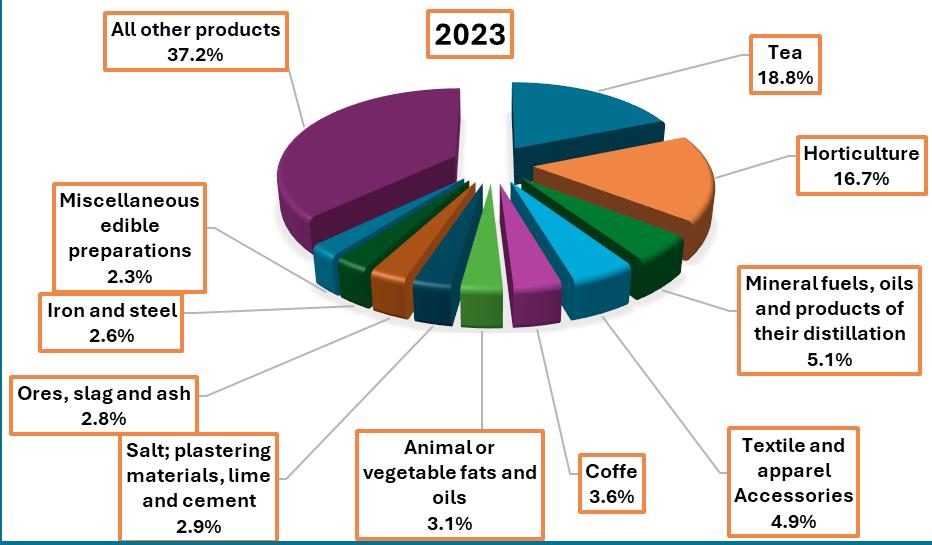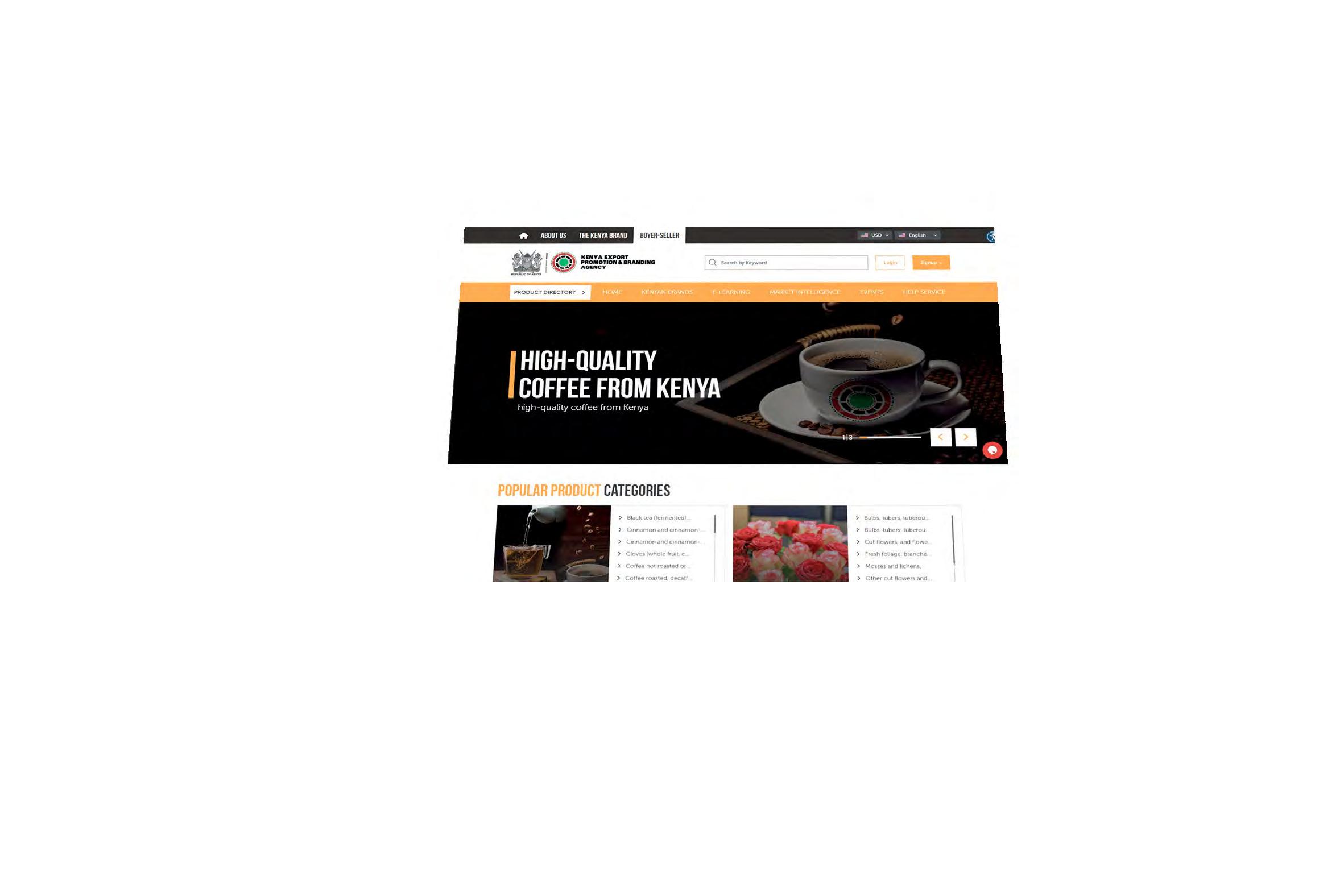






In today’s globalized market, Kenyan exporters face a myriad of challenges when it comes to marketing their products to the international arena. Limited resources, fierce competition, and lack of access to advanced marketing technologies often hinder their ability to effectively reach and engage with potential customers worldwide. However, the advent of Artificial Intelligence (AI) presents a golden opportunity for Kenyan exporters to overcome these challenges and significantly enhance their marketing efforts.
Kenyan exporters are operating with various challenges which include; limited financial resources making it difficult to invest in expansive marketing campaigns or hire marketing experts; minimal understanding of preferences, behaviours, and trends of international consumers which is critical for successful marketing; a lack of effective communication with consumers from diverse cultural backgrounds, posing a significant challenge in driving revenue streams and finally, competition from wellestablished international brands with larger marketing budgets and extensive brand recognition, making it a challenge to capture a market share.
Will Artificial Intelligence solve these challenges? The world is eagerly eying the solutions AI is envisioned to deliver to change our perspective on life and how we do business. AI-powered analytics platforms have proven to provide valuable insights into consumer behaviour, market trends, and competitor strategies. By analysing vast amounts of data, exporters can make informed decisions and tailor their
>>> Continue on page 2
Kenyan exporters should leverage on AI to transform their market entry strategies
KEPROBA’S participation at the Kakamega International Investment Conference 2024
Kenya’s Export Trade Preserving traditions, inspiring the world: Kenya’s cultural heritage in global branding
KEPROBA and E4IMPACT forge partnership for export growth.
Presentation: Product packaging Maureen
>>> Continued from page 1
marketing strategies to specific target markets. AI enables the customization of marketing campaigns based on individual consumer preferences and purchasing behavior. By leveraging on machine learning algorithms, exporters can deliver personalized content and recommendations, increasing engagement and conversion rates.
Language has been a major hindrance in driving brand authenticity and attract opportunities. AI driven language translation tools can bridge the gap between Kenyan exporters and international consumers by translating marketing materials into multiple languages. These platforms Simplify the messaging, assist in cultural adaptation and ensures that marketing messages resonate with diverse audiences across the globe. Simplified content is easily captured by predictive modeling techniques, which help exporters forecast demand for their products in different markets accurately. By analyzing historical sales data, market trends, and external factors, exporters can optimize
inventory management and supply chain operations to meet consumer demand efficiently.
Finally, exporters can leverage on AI automation tools to streamline marketing processes such as email campaigns, social media management, and customer support. By automating repetitive tasks, Kenyan exporters can free up time and resources to focus on strategic initiatives and creative endeavors, ultimately driving growth and expansion.
Kenya Export Promotion and Branding Agency has supported exporters through various initiatives to guide optimal market entry strategies to access the international markets. The Agency has developed the Make It Kenya e-portal platform, which serves as a transaction link for Kenyan exporters and international buyers. This platform facilitates market linkages by leveraging- on technology, allowing Kenyan manufacturers to showcase their products and connect with potential buyers globally. The agency has also provided advisory services to
Kenyan exporters on various aspects, including technology upgrading, quality improvement, design enhancement, standards compliance, and product development, which effectively supports exporters to utilize technology to enhance their products and services.
In conclusion, AI offers abundance of opportunities for Kenyan exporters to overcome the challenges they face in marketing their products to the international market. By harnessing the power of AI-driven technologies, exporters can gain valuable insights, personalize marketing efforts, and streamline operations, ultimately increasing revenues and expanding their global footprint. However, to fully leverage the potential of AI, Kenyan exporters must invest in developing their technological capabilities and fostering a culture of innovation and adaptation. With the right strategies in place, AI has the potential to revolutionize the way Kenyan exporters market their products and compete on the global stage.
The Kenya Export Promotion and Branding Agency (KEPROBA) recently showcased its commitment to fostering economic growth and sustainable development by participating at the Kakamega International Investment Conference (KAIICO) 2024. Held from 19th to 22nd March 2024 at the Masinde Murilo University of Science and Technology in Kakamega County, the event was organized by the County Government of Kakamega in conjunction with the Kakamega County Investment and Development Agency (KCIDA). The primary objective of the conference was to accelerate economic growth through sustainable investments, with a thematic focus on ‘Unveiling counties as emerging frontiers for investment and development.”
The conference focused on various key sectors crucial for economic expansion and sustainable development, including agriculture & value addition, healthcare, social development
(encompassing sports, tourism, hospitality, education, and culture), natural resources, environment, and climate action.
KEPROBA’s participation in this event was multifaceted, aiming to promote and brand Kenya’s export products while offering essential business advisory services, product development procedures, marketing insights, and other pertinent information to stakeholders in relation to exports.
One of the significant highlights of KEPROBA’s participation was the distinguished visit to the Agency’s stand by His Excellency the President Dr. William Ruto, where he interacted with our CEO Ms. Floice Mukabana and the local adoptees showcasing their products. These adoptees included Mbogo Valley/Kuresoi Tea (Blended Teas), Shalom Women Group (African attires, woven baskets, bracelets & kikoys), The Wonder Bee (Honey, Herbal Soap & Body Cream), and
Onja Uone Limited (Macadamia nuts, macadamia cakes, and macadamia body oils).
Throughout the conference, KEPROBA actively engaged in various activities aimed at fostering business growth and cultivating partnerships. Notably, our CEO held discussions with notable figures such as the First Lady Prof. Jane Barasa, and Kakamega County Executive Committee Representatives. These discussions centered around exploring potential areas of collaboration to enhance Kakamega County’s exports and product branding initiatives.
The conference also provided a platform for discussing crucial industrial development initiatives, such as the establishment of a gold refinery in Kakamega, a granite factory in Vihiga County, and conservation efforts focused on the Kakamega Rain Forest to combat climate change. Additionally, investment opportunities in sectors like hospitality, textiles, and edible oil crops were highlighted to ensure self-reliance and grassroots growth in the region.
Moving forward, KEPROBA emphasized the importance of implementing signed memorandums of understanding (MOUs) and regional economic development blueprints, such as the Lake Region Economic Bloc (LREB) strategic plan. Initiatives like constructing railways for interconnectivity, promoting solar energy for affordable power, and enhancing apparel supply chains were identified as crucial steps towards achieving export goals and stimulating job creation.
In conclusion, KEPROBA’s participation at KAIICO 2024 exemplifies its dedication to promoting Kenya’s export sector, fostering economic growth, and facilitating sustainable development. By actively engaging with stakeholders, offering essential services, and showcasing local talent, KEPROBA continues to play a pivotal role in advancing Kenya’s position in the global marketplace.
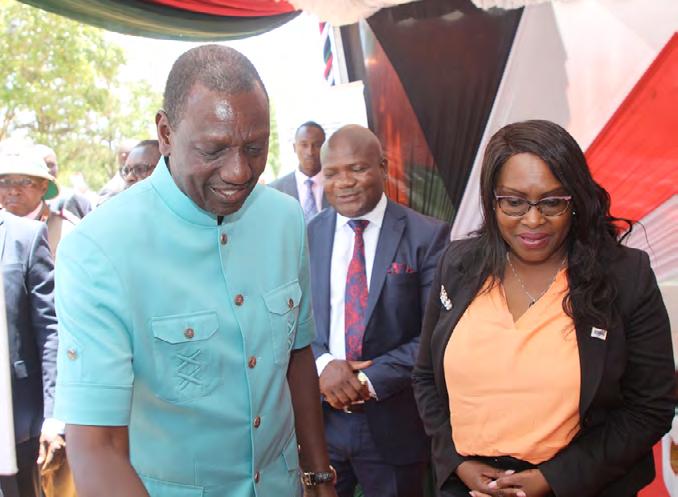
Chief Executive Officer, Floice Mukabana engagement with His Excellency the President Dr. William Ruto at KEPROBA Stand

Kakamega First Lady H.E. Prof. Janet Barasa engaged Made in Kenya Adoptees at Masinde Muliro University during Kakamega International Investment Conference 2024.


Cultural heritage stands as a testament to the richness and diversity of human civilization, weaving together centuries of traditions, beliefs, and expressions that form the very fabric of society. For our country Kenya, cultural heritage is not merely a collection of historical artefacts but a living, breathing embodiment of identity and continuity, deeply rooted in everyday life and shared experiences. The essential value of cultural heritage has gained increasing recognition in recent years, extending far beyond the realm of preservation to encompass a dynamic force in global branding, diplomacy, and socio-cultural discourse. This recognition stems from an understanding that cultural heritage evolves, adapts, and resonates with contemporary audiences, offering insights into past narratives while shaping present identities. As societies navigate the complexities of a rapidly changing world, the preservation and promotion of cultural heritage emerge not only as acts of conservation but also as strategic endeavours that forge connections, foster understanding, and celebrate the rich tapestry of human creativity and resilience across borders and generations.
Kenya’s cultural heritage is like a treasure chest full of vibrant stories and traditions, just as diverse and lively as its beautiful landscapes. It encompasses a vibrant spectrum of artistic expressions, traditional practices, and historical narratives that encapsulate the nation’s enduring spirit of resilience, creativity,

and identity. From the rhythmic beats of traditional music that resonate through the lush valleys to the intricate beadwork of the Maasai artisans, every element of Kenyan culture weaves a narrative of cultural richness and historical significance. With different ethnic communities adding their own flavours, Kenya’s cultural identity becomes a beautiful mosaic of diversity and unity, celebrating the richness of its people and history.
In the realm of global branding, Kenyan companies and organisations have recognized the value of integrating cultural heritage into their branding strategies. This goes beyond using traditional motifs or colours; it involves embodying the spirit and values of Kenyan culture in every aspect of brand identity. Whether it is a safari lodge showcasing local art and cuisine or a fashion brand collaborating with indigenous artisans, the integration of cultural heritage adds authenticity and resonance to the brand. This approach not only enhances the brand’s appeal but also creates deeper connections with consumers who
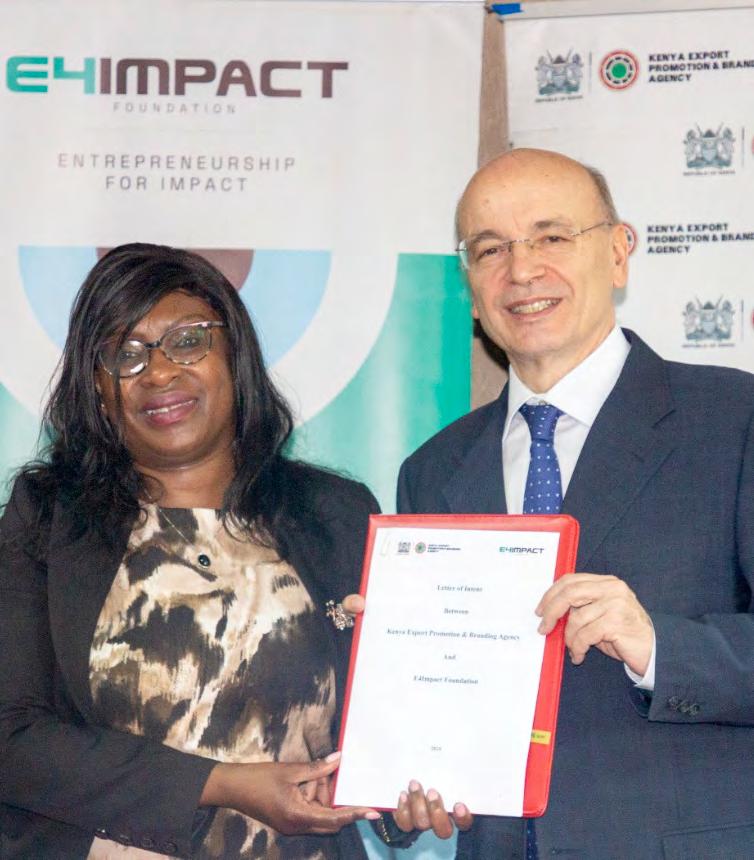
value authenticity and cultural significance in the products and services they choose. By weaving elements of cultural heritage into their branding efforts, Kenyan companies can stand out in the global market, attracting customers who appreciate the rich heritage and stories behind the brand, thus contributing to a positive perception of Kenya’s cultural diversity and creativity on the international stage.
The influence of cultural branding transcends the geographical boundaries of Kenya, resonating as a powerful bridge that unites individuals from various backgrounds, igniting curiosity, admiration, and a deep appreciation for Kenyan culture. This bridge, crafted through cultural branding efforts, not only fosters connections but also opens doors to new markets, facilitates partnerships, and cultivates authentic experiences that transcend mere transactions. Consequently, this holistic approach contributes significantly to shaping a positive global perception of Kenya, portraying it as a nation flowing with heritage, creativity, and innovation, thus amplifying its cultural richness and vibrancy on the international stage.
To sum it up, the preservation and promotion of Kenya’s cultural heritage through global branding transcends mere aesthetics; it embodies a narrative of identity, storytelling, and connection. Through the lens of branding, companies have the transformative power to showcase the profound depth and captivating beauty of Kenyan culture, thereby inspiring, educating, and celebrating its uniqueness on the global platform. This approach not only enriches the brand’s narrative but also fosters a deeper understanding and appreciation of Kenya’s rich heritage, contributing to a more inclusive and culturally diverse world stage.
The Kenya Export Promotion and Branding Agency and E4Impact Foundation have signed a letter of intent to formally establish a collaboration between the two organizations. Both organizations are dedicated to helping Kenyan exporters, developing market connections, and increasing export capability.
While E4Impact will concentrate on identifying exportable services, enterprise growth, and promoting the Made in
Kenya Initiative, KEPROBA will offer training, market tactics, and international contacts.
The Kenya Export Promotion & Branding Agency (KEPROBA) is a state corporation established under the State Corporations Act Cap 446 through Legal Notice No. 110 of 9th August 2019. The Agency’s mandate is to implement export promotion, nation branding initiatives and policies to promote Kenya’s export of goods and services worldwide while E4Impact Foundation (E4IMPACT) is an initiative launched in 2010 by ALTIS-Graduate School of Business and Society of Università Cattolica del Sacro Cuore, with the goal of training impact entrepreneurs in the developing world to support the start-up and growth of their businesses.
The purpose of this Letter of Intent is to set out an understanding between the parties of their rights and responsibilities for enhancing export capacity, fostering market linkages, providing valuable support to exporters in various value chains that align with the government’s BottomUp Economic Transformation Approach. The signatories intend to facilitate the growth of exporters and contribute to the development of a more robust export ecosystem in Kenya.
To support Kenya’s export ecosystem, they will work together to plan training courses, exchange experiences, and take part in exhibitions. This collaboration demonstrates a common commitment to advancing trade, business, and economic growth in Kenya.

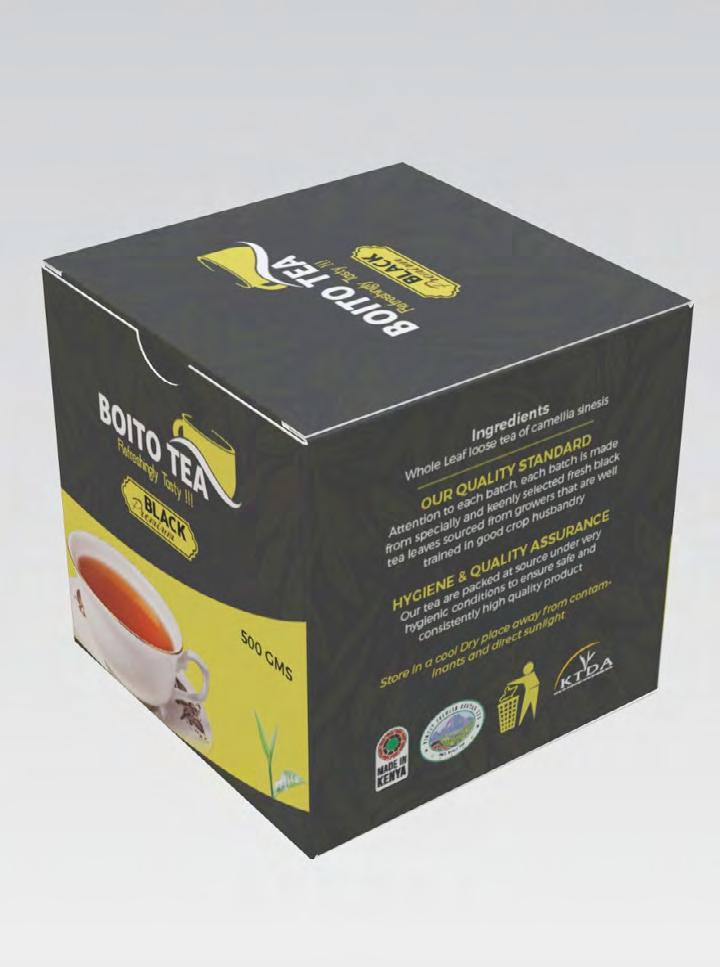
Choosing one product over another can be influenced by various factors. Price, quality, brand reputation, features or benefits, packaging and presentation, personal preferences, reviews and recommendations are just a few of the factors one considers when choosing a product. Ultimately, the decision-making process is complex and can be influenced by a combination of these factors, with different priorities for each individual and each purchase scenario.
Top on my list is product packaging and presentation. I find myself attracted to visually appealing and well-designed packages. The allure of product packaging lies in its ability to engage your senses and emotions, drawing you in and influencing your purchasing decisions.
Packaging is not just about aesthetics; it also serves a practical purpose. It protects the product from damage, contamination, and spoilage during storage, transportation, and display. Good packaging enhances the overall user experience of the product. Easy-to-open packaging, convenient storage solutions, and ergonomic design can improve customer satisfaction and loyalty. Premium packaging can create a sense of luxury and exclusivity, while eco-friendly packaging can appeal to environmentally conscious consumers.
Product packaging is designed to attract consumers like you for several reasons. First and foremost, it serves as a visual cue, catching your attention amidst a sea of other products. Brands invest in eye-catching designs, vibrant colours, and creative typography to stand out on the shelves or online. Additionally, packaging communicates important information about the product, such as its features, benefits, and ingredients. Clever packaging can evoke emotions or convey a specific lifestyle or brand image, appealing to your aspirations or values.
Moreover, packaging plays a crucial role in building brand recognition and loyalty. Consistent packaging design creates familiarity, making it easier for you to identify and choose products from your favorite brands.
Packaging products for international markets requires careful consideration of cultural preferences, regulatory requirements, logistical considerations, and branding strategies.
You need to understand the cultural preferences and customs of your target markets. This includes factors such as color symbolism, language, imagery, and design aesthetics. Tailor your packaging to resonate with the cultural norms and preferences of each market.
In addition, familiarize yourself with the regulatory requirements for packaging and labeling in each target market. This includes regulations related to product safety, labeling requirements, language translations, and packaging materials. Ensure that your packaging complies with all relevant regulations to avoid potential legal issues or market entry barriers.
Consider logistical factors such as transportation, storage, and handling when designing your packaging. Choose packaging materials and designs that are durable, lightweight,
and cost-effective for shipping internationally. Minimize packaging waste and maximize space efficiency to reduce shipping costs and environmental impact.
Customize your branding and messaging to resonate with the preferences and values of each target market. This may involve adapting your brand name, logo, taglines, and marketing messages to suit the cultural context and language of each market. Ensure that your packaging effectively communicates the value proposition of your products and appeals to the target audience.
Include clear and comprehensive product information on your packaging to help customers make informed purchasing decisions. This may include product descriptions, ingredients, usage instructions, safety warnings, and other relevant information. Ensure that all information is provided in the appropriate languages for each target market.
Design packaging that stands out on the retail shelf and captures the attention of consumers. Use eye-catching graphics, colors, and typography to
create visually appealing packaging that communicates the unique selling points of your products. Consider the competitive landscape and consumer preferences in each market when designing your packaging.
Conduct market research and gather feedback from target consumers to test the effectiveness of your packaging designs. Use consumer insights to identify strengths and areas for improvement and iterate on your packaging designs accordingly. Continuously monitor market trends and consumer preferences to stay relevant and competitive in international markets.
Designing product packaging and labeling for international markets requires a thoughtful approach. The Kenya Export Promotion and Branding Agency undertakes interventions in product development such as product design, value-added processing, packaging, labelling, branding of export products. Feel free to engage us in this and we shall be happy to walk with you as you develop your products for export.
“Good writing is clear thinking made visible.”
William Wheeler, writer and journalist.
Written communication can be defined as any written message exchanged between two or more people. Examples of written communication include letters, emails, memos, contracts, concept notes and press releases. Many organizations use written communication to share information with internal and external stakeholders. It is an effective way of informing large numbers of people with minimal distortion, it is easy to store and is a permanent record.
For written communication to be effective, it should possess certain qualities.
To begin with, communication should be clear. If, for example, a letter has been written to request training, it should contain the topic for training, the date, time, venue and number of people to be trained. This will enable the recipient to reply appropriately.
Secondly, the message should be free of grammatical errors. Names of people and places should be spelled correctly and the sentences should be well-constructed. Misspelled words imply that the writer was in a hurry and did not pay attention to the task. Keep paragraphs and sentences short, as complicated and lengthy statements slow the reader down and jumble up the message.
Tone can help your writing be more effective. The tone you use depends on the purpose of the writing and the audience. Regardless of the audience, always use courteous language in all your written communication even when you are upset. Written threats could be used against you in a court of law and will make you sound unprofessional.
Avoid jargon, abbreviations and complex words. This will make it easy for the reader to understand the matter at hand, regardless of their familiarity with your organization or industry.
It is important to proof-read your message before sending it to make sure that everything is in order. You can ask someone to read it for you or you can use an application like Grammarly to review your writing.
Lastly, practice your writing as much as you can. This is the best way to improve your skills and gain confidence.
Kenya’s export trade between 2022 and 2023 paints a mixed picture, showcasing both positive strides and challenges. Notably, the country experienced a remarkable surge in export performance during this period, with total exports surpassing the Kshs 1 trillion mark in 2023, a significant leap from Kshs 874.1 billion in 2022. However, this surge was counteracted by a widening trade deficit, expanding from Kshs 1,380.1 billion to Kshs 1,604.8 billion over the same period.
While exports to key markets like Uganda, Pakistan, and the Netherlands witnessed substantial growth, there was a noticeable decline in exports to major destinations such as the USA, UK, Belgium, and Germany. Kenya’s export commodities also underwent notable shifts, with products like tea, horticulture, and cement experiencing significant growth, while others like animal and vegetable fats, mineral ores, and textiles faced declines.
Despite government efforts to bolster trade, Kenya faced widening trade deficits with several countries, including the Netherlands, USA, and UAE. However, there were positive developments in trade relations with countries like Uganda, Pakistan, and Tanzania, where Kenya managed to narrow
the trade deficit or even achieve a surplus.
Kenya’s economy is expected to remain resilient in 2024, supported by efforts to address trade imbalances, diversify export markets and products, and enhance competitiveness.
Total exports, tentatively valued at Kshs 1.0 trillion, showcased an improved performance compared to Kshs 874.1 billion in 2022, marking a 14.7% increase. This milestone marked the first time Kenya’s export value reached Kshs 1 trillion. Key contributors to this growth included tea, horticulture, salt, plastering materials, lime, cement, fertilizers, meat, and vehicles. Notably, more than 60% of products in the top export category increased in value compared to 2022, highlighting the need for adaptability and diversification within Kenya’s export portfolio.

Kenya’s export landscape saw significant shifts in 2023. While exports to markets like Uganda, Pakistan, and the Netherlands flourished, there was a decline in exports to traditional destinations such as the USA, UK, Belgium, and Germany. This underscores the importance of diversifying export markets to mitigate risks associated with dependence on specific regions.

The Kenya Export Promotion and Branding Agency (KEPROBA) remains committed to addressing challenges such as trade imbalances, fluctuations in export destinations and commodities, and promoting potential markets and products. By widening the supply base and destination markets, KEPROBA aims to bolster Kenya’s export resilience in the face of evolving global trade dynamics.
In conclusion, Kenya’s export journey reflects a blend of growth opportunities and complexities. While achieving record export values, challenges such as widening trade deficits and market fluctuations necessitate adaptive strategies and collaborative efforts to sustain and expand Kenya’s export prowess on the global stage.
